It’s frustrating to find your iPhone not charging when it’s obviously plugged into an outlet. If you know your iPhone isn’t the reason why it’s acting up, something else must have gone wrong somewhere. Don’t panic because as scary as this may seem, there is a solution to this problem.
If you’re not entirely sure what went wrong, we just have the thing for you! In this article, we’re going to help you find out why your iPhone won’t charge. In fact, these reasons might be so simple and straightforward to the extent you’ll start questioning everything around you.
Related: Best Lightning Cable Buying Guide For Apple Devices
Inside This Article
6 Top Reasons Why iPhone Won’t Charge
There’s no need to fret when your iPhone won’t charge. It could just be because of faulty cables or busted power plugs. Cases like these are easy to address. However, there are other reasons that might cause this problem, too. Here are some of them.
1. The Connection is Loose

Almost 90% of the time faulty cable connections cause problems with devices not charging. Sometimes your connection can be loosed and you simply didn’t notice it until you grab your phone hours later only to find it did not charge at all. Well, there aren’t really many complications here. It could be the connection between your cable and your iPhone’s charging port isn’t firm enough or the USB connector is not plugged in properly.
You have to check in order to make sure the connection between the cable and your phone is stable. Moreover, it could be the connection of the lightning charger to the wall outlet is loose. In which case, you’ll have to check whether the power plug is well inserted into the power outlet.
The bottom line is you have to ensure that the connection remains stable so there are no interruptions.
2. Charging Port is Dirty or Damaged
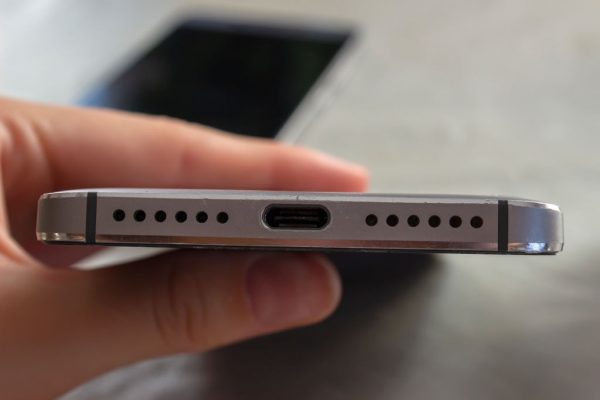
Another possible reason why your iPhone may not charge is that your phone’s battery port is dirty. Since your charging port is just a hole in the middle of your phone, it stands to reason that it is an area prone to dust. It can also collect dirt, lint, and pretty much any debris small enough to fit inside the hole.
If and when there’s enough dust or debris inside your charging port, they will block the power connection pins preventing the device to charge. An iPhone has nine connectors in its port, so if the wrong one is blocked, your phone will be completely barred from charging.
What you can do is clean the dust and gunk inside by using a toothpick or a toothbrush. First, turn off your phone to prevent any long-term damage. Then, clean it lightly. Take note not to use water when you clean.
Another reason why your charging port might be broken, which is much harder to fix, is that the ports may have suffered damage, preventing certain functions from working properly. These functions can range from battery life to screen problems, and you guessed it, charging problems. For example, when your phone is exposed to water, the ports may get compromised especially if you have an iPhone that is not water-resistant.
3. Your Cable is Busted

Let’s be honest, iPhone cables are known for their fragility. That means when you often bend your charging cable, you risk its durability. While some of your exposed iPhone lightning cables might work for you today, you’ll never know when it decides to quit on you. Hence, if you find your iPhone not charging, it might be high time to get a new lightning cable to check whether a faulty cable is a problem.
When it comes to protecting your charging cables, you need to be cautious. Make sure not to get it under your chair. You have to put it in a safe place where you can guarantee that it won’t be damaged after use. You can never be too careful with charging cables.
Additionally, there are lightning cables accessories you can get to protect from sustaining damages.
4. Your Outlet Has Some Problems
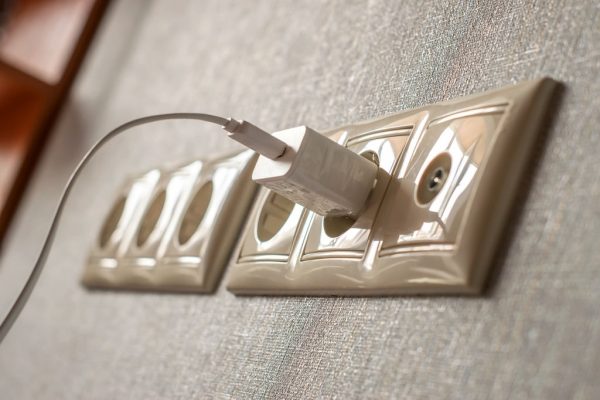
After you’ve checked your charger and your iPhone charging port for any problems, check your outlet. If there are no problems with your charger and your port, chances are, the outlet is the problem.
To check if your outlet has an issue, use different chargers or plug different things into it. If everything else but your charger works, then your charger is the problem. But if everything doesn’t work, then the outlet is your problem, which arguably is a bigger issue than having a broken charger.
Outlets are extremely difficult to repair. You can fix it, but it’ll be broken for a while. Not for forever, just until you can get your outlet fixed. Hence, the only thing you can do is use a different outlet. If you decide to get it fixed, that is. Fixing an outlet is often such a hassle that it can be more trouble than it’s worth.
5. The iPhone Software is Malfunctioning
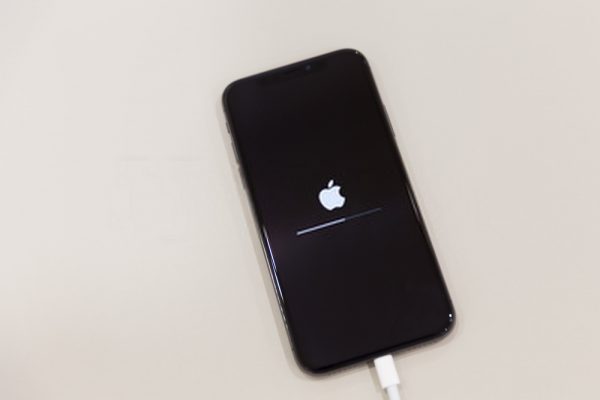
Sometimes, the problem won’t be with the charger, outlet, or your charging port, but the phone itself. More specifically, the software of your iPhone is malfunctioning, causing it not to charge. Although the charger and outlet are key components, the iPhone itself is what decides its charging.
The hardware of the phone is the brawns of the operation, while the software is the brain. The software is surprisingly fragile and can malfunction because of minor glitches. Other than this, your software will stop charging your phone if it detects power fluctuations. This acts as a protective measure to preserve the battery and longevity of your phone.
You might think that the battery of your phone is why it isn’t charging, but this isn’t necessarily the case. Although, it can be the cause from time to time. But if it’s just a minor glitch, what you can do is try a hard reset.
Press your volume up and down buttons, hold them, and then quickly release. Then press and hold the power button on the side and wait until the Apple logo comes up. It might take some time for it to come out, but keep your finger on the button, don’t let go.
Once it pops up, let go and your iPhone will restart. After it restarts, hopefully, your problem will be fixed. If not, then you might be in a predicament. This is because you may have something beyond just a minor glitch; something more deep-rooted. In which case, you might have to get your iPhone repaired. You can either bring your iPhone to the nearest Power Mac Center near you or you can contact Apple Support for a detailed guide on what to do.
6. Charging Accessories Aren’t Apple-Certified
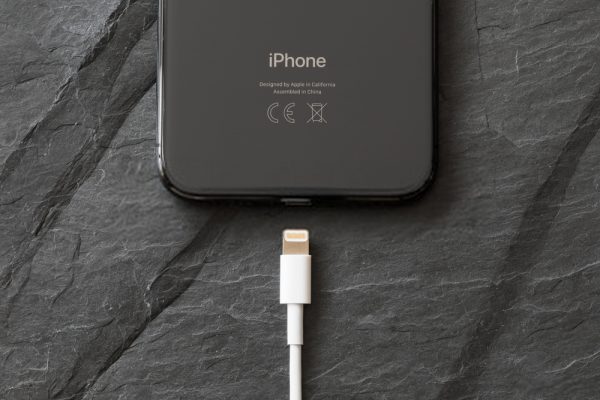
Is your iPhone not charging still? Your charger might not be Apple-certified. You must never use cables like these since they won’t be able to charge your phone. Apple-certified doesn’t mean cables you can get exclusively from the Apple store.
If you have a third-party cable, don’t throw it away yet. As long as it’s Apple-certified, any cable works. Having an Apple-certified cable means that it has a label that says “Made for iPhone”. This label can be put on the cable or the lightning charger itself. It’s usually a sticker on one of the two.
When you use a charger that isn’t Apple-certified, your phone will notify you. You’ll get an alert that says “Your accessory isn’t supported”. If it appears and you’re sure that your charger is Apple-certified, then it could be a different reason.
Apple-certified chargers from third parties exist. While these aren’t common to see, you should still be aware of them. Furthermore, Apple-certified products without labels do exist. Chargers like these still work on your iPhone, but you’ll only know when you try them. As a solution, it would be better to buy a lightning charger with an Apple-certified label.
Quick Fixes When iPhone Won’t Charge
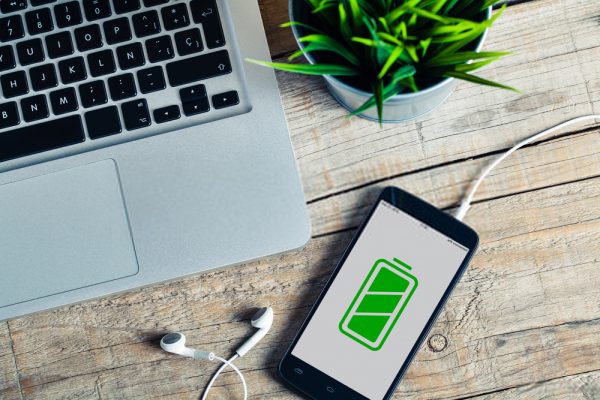
Electronics are complicated and there are plenty more reasons as to why your iPhone isn’t charging. So, the next time before you start complaining about why your iPhone won’t turn on even if you’ve plugged it in, check again. Perhaps, you never really successfully charged them. Here are a few quick fixes to solve these iPhone charging problems.
1. Try a Different iPhone Charger
If you are suspecting the problem is caused by a faulty charger or lightning cable, consider trying a different Apple-certified charger. You can also try other methods like charging it with a power bank, a computer, a MagSafe charger, and even a car charger. The idea is to swap to a different charger and see whether that makes a difference.
If you need a new charger, you should get one that’s Apple-certified. The maximum approved amperage for iPhone chargers is 2.1 amps. If you’re thinking of getting a third-party charger, chances are the amperage is higher by a small or insane amount.
This can lead to permanent damage, so your software will likely stop it from charging your phone. Unlike uncertified third-party chargers, Apple-certified chargers will charge your phone quickly and safely. Additionally, Apple-certified chargers don’t pose any danger to them.
2. Repair Your iPhone
If your phone has suffered from water damage or its software is malfunctioning, you can go to an Apple store. From there, you can opt to repair your iPhone’s broken features. However, if your phone has been damaged too much, the only option is to get it replaced.
Try out some personal repair services. These services will try to fix your iPhone to the best of their abilities. Some of them offer lifetime services on parts. They also have options like repairing your iPhone’s charging port. Again, you can always reach out to experts from Apple Support to get more ideas on how to address the problem.
Moreover, if you decide to have your iPhone repaired, there are services that Apple service centers do not dare touch upon. However, having experts look into the problem from the start might just save you money and time. You won’t have to say goodbye to your data, either. Sometimes, there’s just someone better than the original that can offer you better services for a lot less.
3. Prevention
Let’s assume you have successfully diagnosed the cause of why your iPhone won’t charge, what you need to do next is try to prevent similar instances from happening again. There are a couple of steps you can take to ensure that your problem doesn’t happen again.
One way of prevention is for you to take extra care of your cable. Your cable is the lifeline of your lightning charger, so you must take care of it. Be careful not to tangle the cable on your chair or elsewhere, which can result in damages. Always be careful of where you’re placing your cable. Never put it in a dangerous spot. Another way to protect your cable is by wrapping it with a rubber or plastic cable protector that you can buy from Amazon or Banggood.
Another thing you can do to ensure your iPhone will charge when plugged into a power outlet is to be careful of your phone’s charging port. You can also do regular checkups and clean your iPhone’s charging port so it doesn’t get full of gunk.
To ensure that it doesn’t suffer from water damage, you have to keep it away from any sources of water. You also have the option of buying a phone case that can protect your charging port. Some phone cases have a cover for your charging port whenever you’re not using it.
4. Update Your Operation System
We always stress the importance of updating your iPhone’s iOS when there’s a new update rollout. Apple rolls out updates to provide bug fixes and other types of fixes needed for the iPhone (or iPad and Mac) to function efficiently.
To check whether an update is available for your iPhone:
- Open Settings then tap on General.
- Select Software Update.
Allow your device to scan for an available update. Simply tap Download & Install when an update is available. Otherwise, your screen will display that you have the latest version of iOS.
Conclusion: Moving Forward
We hope we were able to help you diagnose the problem behind your iPhone not charging. Whenever someone’s iPhone doesn’t charge, it’s usually one of the six above reasons. Moving forward, there are always things you can do to prevent the problem from arising again.
